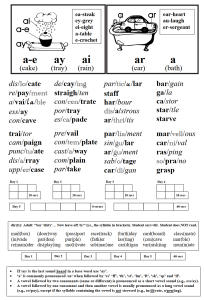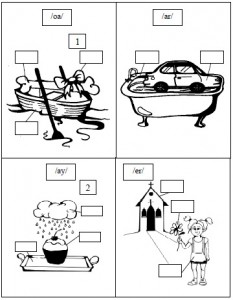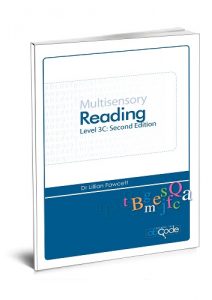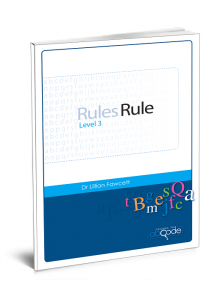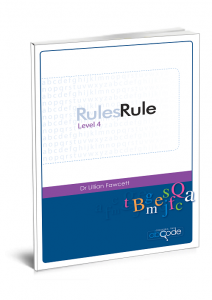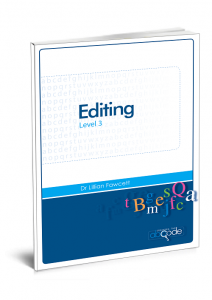Samples of the Grapheme & Vocabulary Development sections: Multisensory Reading Level 3 Programs
Vocabulary Development
On-going grapheme and vocabulary development is a key component of becoming a competent reader and is the key to the success of the programme. Two phonemes (sound units) and their common graphic representations (graphemes) are introduced each week. Each grapheme is linked to a key word and the key words are combined into an integrated picture story. The key words and integrated picture story both assist in retention and recall. Introduce the phoneme, the accompanying graphemes, key words and integrated picture story to the student.
- It is common in English for any one phoneme to be represented by numerous graphemes. The less common graphemes are listed for information and future reference.
- Rules associated with the reading (decoding) or spelling (encoding) of the phoneme or graphemes are highlighted in a box. These are discussed with the student.
- There are two columns of words for each phoneme containing the graphemes to be learned so the student is able to see the graphemes in context. The words have also been syllabified to reinforce the strategy of breaking words into syllables to assist with decoding.
- The goal is for the student to learn to read one column of words in 10 seconds or less each day. On the 5th day students should practise reading all 40 words until they can do so in 40 seconds. Research shows that reading the words at this rate (i.e., 1 word per second) is an indicator that the words have been stored in long-term memory and that students will be able to return to these words and still read them accurately in several weeks time.
Note: Teach and encourage the student to use the following strategy when trying to work out the spelling of unfamiliar words. Say the sounds in the word (e.g. drain = d-r-ay-n). Think of the /ay/ picture story (i.e., the rain is falling on the cake on the tray). Write the word using each of the different graphemes (e.g., drain, drane, drayn). Eliminate any word which doesn’t agree with the rules (e.g., ‘ay’ is only used at the ends of base words so ‘drayn’ must be wrong).
Phonological Awareness
Kilpatrick’s (2015) research shows that proficiency in phoneme manipulation is an important component of fluency. Each day the student attempts to complete as many of these examples as possible in one minute.
An adult says the whole word (e.g., (d)rum) and the student repeats. The adult asks the student to leave off the sound in brackets (e.g., leave off /d/). The student responds ‘rum’. Once the student is correct, go immediately onto the next word. The same process is used for substitution activities (e.g., “Say ‘spot’.” Student repeats. “Change /o/ to /a/” i.e., say the sound NOT the letter name). Student says, “Spat.” If the student is having difficulty, use counters to represent each component and manipulate the counters to demonstrate the process.
Picture Stories
- At the end of each section, the integrated pictures have been reproduced 5 times (one for each of the 5 days of the program). Next to the pictures is a space for students to write in the accompanying grapheme. Students are required to first say the picture story (the rain is falling on the cake on the tray) and then write the graphemes while saying out aloud the phoneme and the key picture (e.g., /ay/ for tray).
- The pictures of previously learned graphemes are also included. Students should attempt to write the grapheme and say the accompanying phoneme and key picture from memory. If students find this difficult, have them complete the ones they do know and then refer back to the appropriate page in the text to find the answer. Students are more likely to remember the grapheme next time if they take responsibility for locating the answer themselves rather than just being told.
- The visual, auditory and tactile input, along with the repetition, ensures that this information becomes embedded in the student’s long term memory.

Click on the book images to purchase.
“I have seen a huge change in Ariella’s reading and spelling from this programme. Ariella has loved coming to learn with you – such enthusiasm. “Caryn (Mother) – Noranda
Reading Accuracy Age: Before: 7 years 11 months After: 9 years 8 months
Reading Comprehension Age: Before: 7 years 5 months After: 10 years
Spelling Age: Before: 8 years 8 months After: 9 years 8 months
Known graphemes: Before: 18 After: 52
Number of lessons: 12



